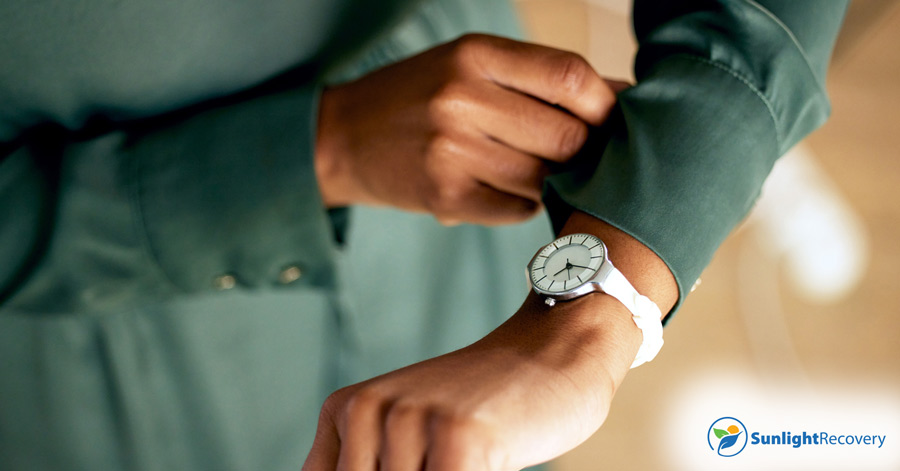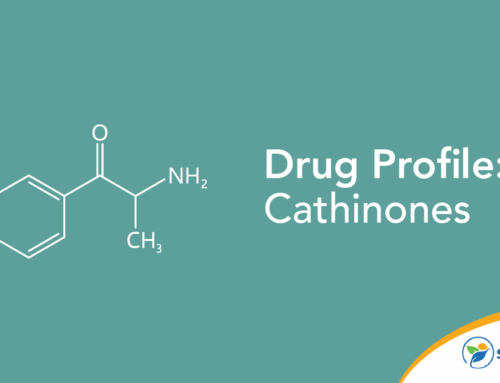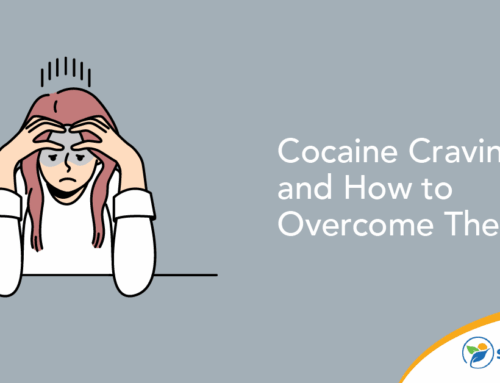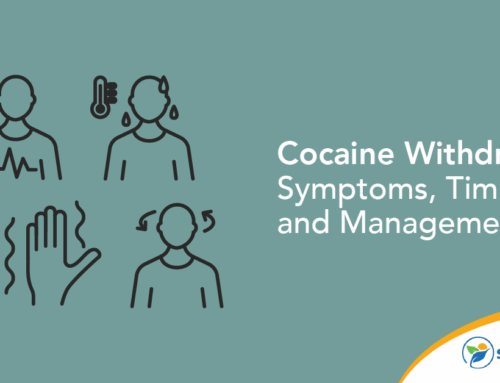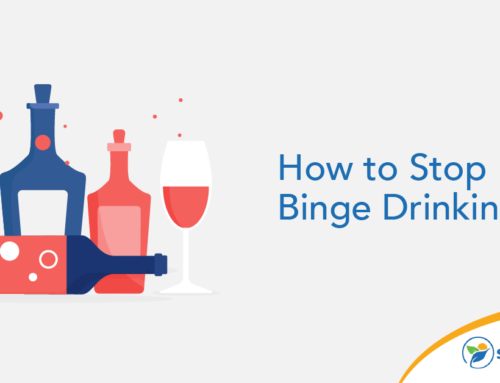If this is an emergency situation, contact emergency services and follow Narcan/Naloxone application instructions.
How long does it take naltrexone to work? This is a common question for people starting treatment for opioid or alcohol addiction. Similarly, people who use opioids and their loved ones may wonder, “How long does naloxone take to work?” If you’re thinking about entering recovery for an alcohol or substance use disorder and want to know more about medications such as naltrexone and naloxone, this guide provides a comprehensive look at how these drugs can support a sober lifestyle.
What Is Naltrexone?
Naltrexone is an oral or injectable drug formulated to prevent opioids and alcohol from creating pleasurable effects, which in turn reduces cravings. It’s approved by the Food and Drug Administration as a type of medication-assisted therapy for substance abuse disorder. Recovering from an addiction to these substances may include being prescribed naltrexone (Vivitrol) in combination with other treatments such as individual and group therapy.
Patients typically receive a daily dose of the oral form of naltrexone. Those prescribed the intramuscular injection form must visit their doctor once a month to receive the medication. Side effects of naltrexone, which are usually mild, may include toothache, insomnia, cold and flu symptoms, muscle and joint aches, appetite changes, nausea and vomiting, dizziness, headache and fatigue.
It’s not safe to take naltrexone if you currently use any drugs, including tranquilizers, sedatives, opioids and alcohol. You should also avoid this medication if you have an allergy to naltrexone, are pregnant or breastfeeding, or have a kidney, bleeding or liver disorder.
Make sure to tell your healthcare provider about other prescription and over-the-counter medications you take, so they can check for potential interactions. It’s also important to note that if someone takes opioids again after a period of recovery with the help of naltrexone, they have an increased risk of overdose even at a lower amount than they used to take.
What Is Naloxone?
When someone overdoses on prescription opioids, heroin or fentanyl, injecting naloxone could potentially save their life. Commonly known by the brand name Narcan, this drug comes in an injectable version and as a prefilled nasal spray. It’s designed to be easy to carry and use, so anyone can administer naloxone in an emergency overdose situation. It can help the person wake up and begin breathing again.
According to the Centers for Disease Control and Prevention, 50,000 Americans died from an opioid overdose in 2019 alone. Carrying naloxone or having it in your home could be a life-saving decision if you or a loved one has an opioid addiction. It won’t hurt someone who hasn’t taken opioids even if they’ve taken a different drug, so it can always be safely given if you suspect an overdose has occurred.
The CDC also reports that more than 33% of opioid overdoes occur when a witness is present. Signs of overdose include vomiting, gurgling or choking sounds, deep, slow snores, blue- or gray-tinged skin, lips or nails, erratic, slow or absent pulse and/or breathing, an inability to talk if awake and unresponsiveness.
People who receive naloxone may still show signs of overdose even if they wake up. These can include blood pressure changes, headaches, nausea and vomiting, sweating, tremors and rapid heartbeat. You should make sure they get emergency medical attention by calling 911 before you give naloxone.
Differences in How These Chemicals Function
Naltrexone binds to opioid receptors in the brain, blocking codeine, morphine, heroin and other opiate drugs from affecting mood and behaviors. When taking naltrexone, users don’t experience sedation or a euphoric high when they take these substances. Naltrexone doesn’t have addictive properties or cause withdrawal symptoms, and it’s not categorized as an opioid medication.
Naloxone also blocks the effect of opioids, which has the effect of reversing an overdose if taken in time. Like naltrexone, it’s an opioid antagonist, which binds to the brain’s opioid receptors. Taking naloxone can also restore the person’s ability to breathe. Unlike naltrexone, however, naloxone works only with opioids and has no impact on an alcohol overdose.
How Long Does It Take Naltrexone to Work?
How fast does naltrexone work? The oral version of this drug starts working within 60 minutes after you take it. If you receive the injectable version, the drug’s effects peak about 2 hours after it’s administered and peak again 48 to 72 hours after administration.
Naltrexone doesn’t work as expected if you take it while actively using opioids or alcohol. You must go through medical detox and completely discontinue substance use for at least 10 days before your doctor can prescribe naltrexone.
How Long Does Naloxone Take to Work?
How fast does naloxone work? This drug takes effect within 2 to 3 minutes of administration. Narcan instructions indicate you should perform rescue breathing or CPR if the person is not breathing. You can give another dose of Narcan if they don’t wake up after 2 minutes. While you wait for help to arrive, turn the person on their side to prevent choking.
How Long Do These Medications Last?
The oral form of naltrexone lasts for 24 to 36 hours if you take the 50 mg tablets, 48 hours for the 100 mg tablets and 72 hours for the 150 mg tablets. If you receive the injection, the effects peak after 14 days, but the drug continues to work in your body for 30 days.
The effect of naloxone only last for about 30 to 90 minutes. Once it wears off, the person can still be affected by opioids remaining in the body, so it’s important to call 911 even after effectively administering naloxone. Stay with the person until medical help arrives.
If you or a family member struggles with addiction, contact the team at Sunlight Recovery. Our qualified professional addiction counselors are available 24 hours a day, 7 days a week to help you recover from a substance use disorder. We have a range of programs for alcohol and opioid abuse, including medication-assisted treatment with naltrexone. We offer both inpatient and outpatient care and accept a wide range of insurance plans.


